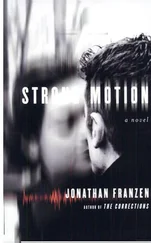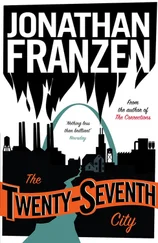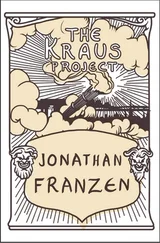Jonathan Franzen - The Discomfort Zone
Здесь есть возможность читать онлайн «Jonathan Franzen - The Discomfort Zone» — ознакомительный отрывок электронной книги совершенно бесплатно, а после прочтения отрывка купить полную версию. В некоторых случаях можно слушать аудио, скачать через торрент в формате fb2 и присутствует краткое содержание. Город: Ney York, Год выпуска: 2006, ISBN: 2006, Издательство: Farrar, Straus and Giroux, Жанр: Современная проза, на английском языке. Описание произведения, (предисловие) а так же отзывы посетителей доступны на портале библиотеки ЛибКат.
- Название:The Discomfort Zone
- Автор:
- Издательство:Farrar, Straus and Giroux
- Жанр:
- Год:2006
- Город:Ney York
- ISBN:918-0-312-94841-2
- Рейтинг книги:3.5 / 5. Голосов: 2
-
Избранное:Добавить в избранное
- Отзывы:
-
Ваша оценка:
- 80
- 1
- 2
- 3
- 4
- 5
The Discomfort Zone: краткое содержание, описание и аннотация
Предлагаем к чтению аннотацию, описание, краткое содержание или предисловие (зависит от того, что написал сам автор книги «The Discomfort Zone»). Если вы не нашли необходимую информацию о книге — напишите в комментариях, мы постараемся отыскать её.
Notable Book of the Year The Discomfort Zone
The Discomfort Zone — читать онлайн ознакомительный отрывок
Ниже представлен текст книги, разбитый по страницам. Система сохранения места последней прочитанной страницы, позволяет с удобством читать онлайн бесплатно книгу «The Discomfort Zone», без необходимости каждый раз заново искать на чём Вы остановились. Поставьте закладку, и сможете в любой момент перейти на страницу, на которой закончили чтение.
Интервал:
Закладка:
It was on federal property, though, that I got my four-hundredth species. In the village of Rockport, on Aransas Bay, I boarded a shallow-draft birding boat, the Skimmer , which was captained by an affable young outdoorsman named Tommy Moore. My fellow passengers were some eager older women and their silent husbands. If they’d been picnicking in a place where I had a rarity staked out, I might not have liked them, but they were on the Skimmer to look at birds. As we cut across the bay’s shallow, cement-gray waters and bore down on the roosting site of a dozen great blue herons — birds so common I hardly noticed them anymore — the women began to wail with astonishment and pleasure: “Oh! Oh! What magnificent birds! Oh! Look at them! Oh my God!”
We pulled up alongside a very considerable green salt marsh. In the distance, hip-deep in salt grass, were two adult whooping cranes whose white breasts and long, sturdy necks and russet heads reflected sunlight that then passed through my binoculars and fell upon my retinas, allowing me to claim the crane as my No. 400. One of the animals was bending down as if concerned about something in the tall grass; the other seemed to be scanning the horizon anxiously. Their attitude reminded me of parent birds I’d seen in distress elsewhere — two bluejays in the Ramble fluttering in futile, crazed rage while a raccoon ate their eggs; a jittery, too-alert loon sitting shoulder-deep in water by the side of a badly flooded Minnesota lake, persisting in incubating eggs that weren’t going to hatch — and Captain Moore explained that harm appeared to have befallen the yearling child of these two cranes; they’d been standing in the same place for more than a day, the young crane nowhere to be seen.
“Could it be dead?” one of the women asked.
“The parents wouldn’t still be there if it had died,” Moore said. He took out his radio and called in a report on the birds to the Aransas National Wildlife Refuge office, which told him that the chief crane biologist was on his way out to investigate.
“In fact,” Moore told us, stowing the radio, “there he is.”
Half a mile away, on the far side of a shallow salt pool, keeping his head low and moving very slowly, was a speck of a human figure. The sight of him there, in stringently protected federal territory, was disconcerting in the way of a boom mike dipping into a climactic movie scene, a stage-hand wandering around behind Jason and Medea. Must humankind insert itself into everything ? Having paid thirty-five dollars for my ticket, I’d expected a more perfect illusion of nature.
The biologist himself, inching toward the cranes, alone in his waders, didn’t look as if he felt any embarrassment. It was simply his job to try to keep the whooping crane from going extinct. And this job, in one sense, was fairly hopeless. There were currently fewer than 350 wild whooping cranes on the planet, and although the figure was definitely an improvement on the 1941 population of 22, the long-term outlook for any species with such a small gene pool was dismal. The entire Aransas reserve was one melted Greenland ice cap away from being suitable for waterskiing, one severe storm away from being a killing field. Nevertheless, as Captain Moore cheerfully informed us, scientists had been taking eggs from the cranes’ nests in western Canada and incubating them in Florida, where there was now a wholly manufactured second flock of more than thirty birds, and since whooping cranes don’t naturally know the way to migrate (each new generation learns the route by following its parents), scientists had been trying to teach the cranes in Florida to follow an airplane to a second summering site in Wisconsin…
To know that something is doomed and to cheerfully try to save it anyway: it was a characteristic of my mother. I had finally started to love her near the end of her life, when she was undergoing a year of chemotherapy and radiation and living by herself. I’d admired her bravery for that. I’d admired her will to recuperate and her extraordinary tolerance of pain. I’d felt proud when her sister remarked to me, “Your mother looks better two days after abdominal surgery than I do at a dinner party.” I’d admired her skill and ruthlessness at the bridge table, where she wore the same determined frown when she had everything under control as when she knew she was going down. The last decade of her life, which started with my father’s dementia and ended with her colon cancer, was a rotten hand that she played like a winner. Even toward the end, though, I couldn’t tolerate being with her for more than three days at a time. Although she was my last living link to a web of Midwestern relations and traditions that I would begin to miss the moment she was gone, and although the last time I saw her in her house, in April 1999, her cancer was back and she was rapidly losing weight, I still took care to arrive in St. Louis on a Friday afternoon and leave on a Monday night. She, for her part, was accustomed to my leavings and didn’t complain too much. But she still felt about me what she’d always felt, which was what I wouldn’t really feel about her until after she was gone. “I hate it when Daylight Savings Time starts while you’re here,” she told me while we were driving to the airport, “because it means I have an hour less with you.”
As the Skimmer moved up the channel, we were able to approach other cranes close enough to hear them crunching on blue crabs, the staple of their winter diet. We saw a pair doing the prancing, graceful, semiairborne dance that gets them sexually excited. Following the lead of my fellow passengers, I took out my camera and dutifully snapped some pictures. But all of a sudden — it might have been my having reached the empty plateau of four hundred species — I felt weary of birds and birding. For the moment at least, I was ready to be home in New York again, home among my kind. Every happy day with the Californian made the dimensions of our future losses a little more grievous, every good hour sharpened my sadness at how fast our lives were going, how rapidly death was coming out to meet us, but I still couldn’t wait to see her: to set down my bags inside the door, to go and find her in her study, where she would probably be chipping away at her interminable e-mail queue, and to hear her say, as she always said when I came home, “So? What did you see?”
Acknowledgments
The author is especially grateful to Kathy Chetkovich, Chris Connery, Chris Davis, Nicky Dawidoff, Henry Finder, Jonathan Galassi, Chip Jahn, Gayle Morley-Jahn, Bob Mutton, David Remnick, Kate Siebert, Bill Symes, Elisabeth Weinmann, the Center for Cultural Studies at the University of California, Santa Cruz, and the many generous and forgiving alumni of Fellowship and DIOTI. “My Bird Problem” was first published as an essay in The New Yorker, as were portions of three other chapters.
Notes
1
It will be difficult to persuade me that the story of the Prodigal Son is not the legend of a person who didn’t want to be loved.
2
Blushing, palpitations, a guilty conscience: these are what come of not having sinned.
3
Der (masculine) Löffel; die (feminine) Gabel; das (neuter) Messer.
4
Strive, float, weave, live, tremble, give.
5
You awaken and stir a powerful resolve / To strive, henceforth, for the highest form of being.
6
Do you know the country where the lemon trees bloom, / and the oranges like gold in leafy gloom …Maybe you know it?
7
Интервал:
Закладка:
Похожие книги на «The Discomfort Zone»
Представляем Вашему вниманию похожие книги на «The Discomfort Zone» списком для выбора. Мы отобрали схожую по названию и смыслу литературу в надежде предоставить читателям больше вариантов отыскать новые, интересные, ещё непрочитанные произведения.
Обсуждение, отзывы о книге «The Discomfort Zone» и просто собственные мнения читателей. Оставьте ваши комментарии, напишите, что Вы думаете о произведении, его смысле или главных героях. Укажите что конкретно понравилось, а что нет, и почему Вы так считаете.












